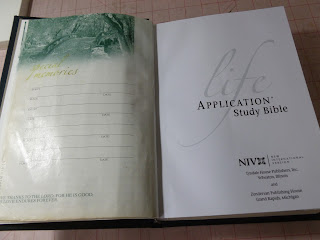 |
| My T-shirt from Wonder Book says on the back, “If there were no books, there would be no Moby Dick.” Melville’s classic makes an appearance in my novel. |
Book artist Karen Hanmer shepherded 10 of us through a challenging two-day springback binding workshop in the Folger Shakespeare Library's conservation lab two weekends ago. This past Saturday, I attended an American Christian Fiction Writers (ACFW) conference in Virginia. Both of these events confirmed my commitment to meld bookbinding with novel-writing. (See 2014 post: “Bible Repair and Novel Writing Make a Mess.”)
My novel-in-progress,
The Broken Bible, is the first in a series featuring a bookbinder who solves mysteries. A “book-breaker” is a person who takes apart books (of prints, say) in order to sell individual pages. A book-breaker is considered a villain by bibliophiles. (“He breaks books! He’s
scum!” is a direct quote from someone I know.) The conflicts unleashed in my novel by the discovery of a page from a “broken” 1526 Tyndale New Testament lead to broken hearts—and broken commandments.
The restoration of an antique ledger—a Cemetery Book with a springback binding—is a plot point in
The Broken Bible, so I was thrilled to take Karen’s class. She is a generous and skillful instructor and binder. The Folger lab is new and modern. What a privilege to work there for two days! We brought our own tools and used their heavy equipment (the board shear and book presses). I enjoyed the weekend fusion of my blue-collar book world (I’m a book wrangler at Wonder Book, a giant used-book store) with the rarefied environment of book conservators who handle Shakespeare First Folios.
By the way, I recommend the current Folger exhibit, “Will and Jane: Shakespeare, Austen, and the Cult of Celebrity” (http://www.folger.edu/exhibitions). For those who have seen the 1996 A&E “Pride and Prejudice,” Colin Firth’s shirt is on prominent display. Another case contains works that satirize Shakespeare and Austen, including Seth Grahame-Smith’s “Pride and Prejudice and Zombies.”
The ACFW Conference imparted instruction, vision, and motivation for editing my novel and writing a first draft of the next in the series . I am grateful to author Jan Elder, who leads my writer’s group, for the ride, the encouragement, and the fellowship (along with Steve Baer, a member of the group). When I told one of the organizers that the conference gave me more than my money’s worth, she said that was their goal.





















